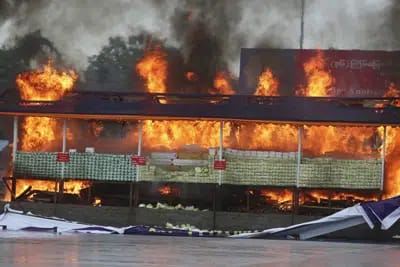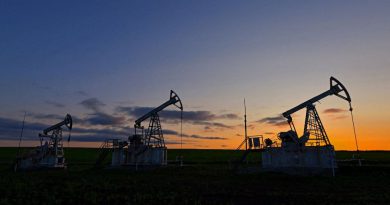Myanmar burns $446 million worth of seized drugs as illicit trade booms in Southeast Asia
Bangkok (AP) — The authorities in Myanmar destroyed more than $446 million worth of illegal drugs seized from around the country to mark an annual international anti-drug trafficking day on Monday, police said.
The drug burn came as U.N. experts warned of increases in the production of opium, heroin and methamphetamine in Myanmar, with exports threatening to expand markets in South and Southeast Asia.
Myanmar has a long history of drug production linked to political and economic insecurity caused by decades of armed conflict. The country is a major producer and exporter of methamphetamine and the world’s second-largest opium and heroin producer after Afghanistan, despite repeated attempts to promote alternative legal crops among poor farmers.
In the country’s largest city, Yangon, a pile of seized drugs and precursor chemicals worth $207 million was incinerated. The destroyed drugs included opium, heroin, methamphetamine, marijuana, kratom, ketamine and crystal meth, also known as ice.
The burn coincided with the UN’s International Day against Drug Abuse and Illicit Trafficking.
Authorities also destroyed drugs in the central city of Mandalay and in Taunggyi, the capital of eastern Shan state, both closer to the main drug production and distribution areas.
Last year, authorities burned a total of more than $642 million worth of seized drugs.
Experts have warned that violent political unrest in Myanmar following the military takeover two years ago — which is now akin to a civil war between the military government and its pro-democracy opponents — has caused an increase in drug production.
The production of opium in Myanmar has flourished since the military’s seizure of power, with the cultivation of poppies up by a third in the past year as eradication efforts have dropped off and the faltering economy has pushed more people toward the drug trade, according to a report by the U.N. Office on Drugs and Crime earlier this year.
Estimates of opium production were 400 metric tons (440 tons) in 2020, rising slightly in 2021, and then spiking in 2022 to an estimated 790 metric tons (870 tons), according to the report.
The U.N. agency has also warned of a huge increase in recent years in the production of methamphetamine, driving down prices and reaching markets through new smuggling routes.
The military government says some ethnic armed organizations that control large swaths of remote territory produce illicit drugs to fund their insurgencies and do not cooperate in the country’s peace process as they do not wish to relinquish the benefits they gain from the drug trade. Historically, some rebel ethnic groups have also used drug profits to fund their struggle for greater autonomy from the central government.
Most of the opium and heroin exported by Myanmar, along with methamphetamine, goes to other countries in Southeast Asia and China



